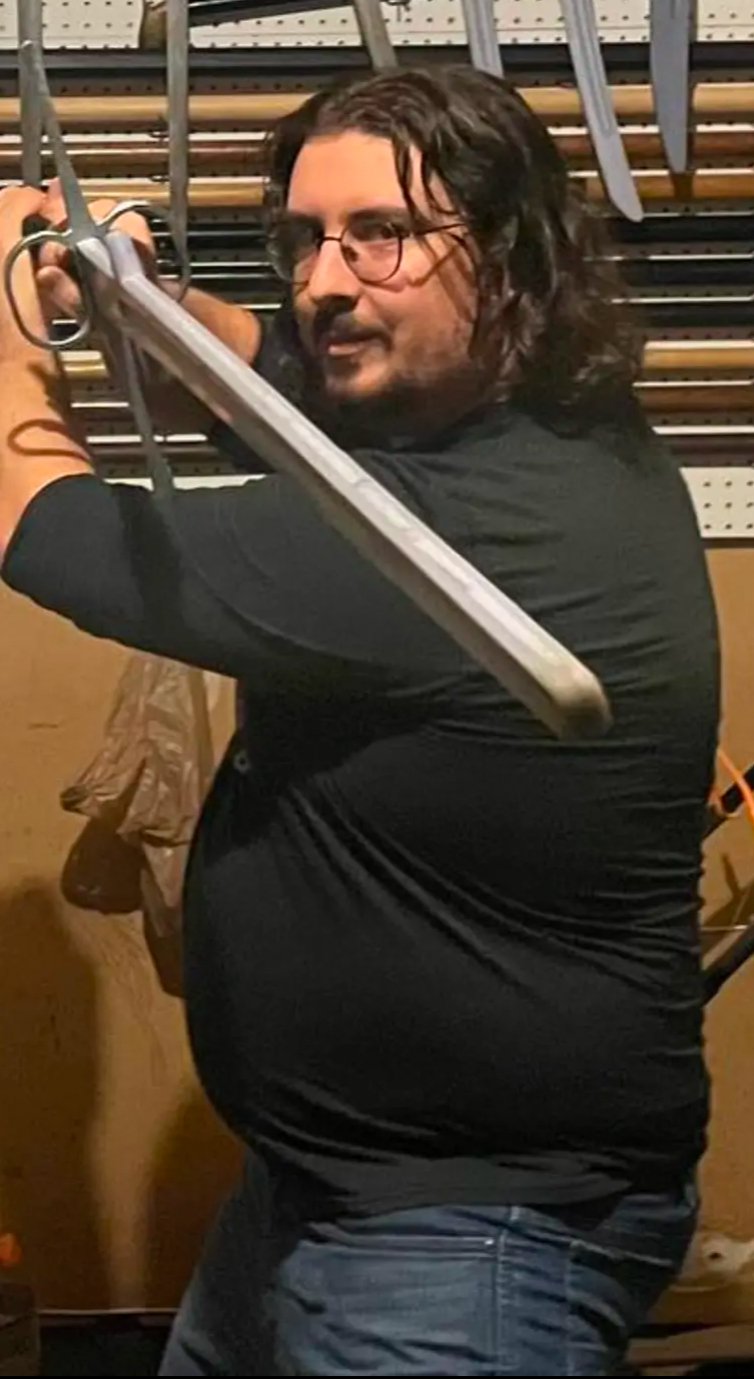
OUR GREATSWORD CLASSES
Wednesdays at 7:30PM-8:30PM
Have you ever wondered what it was like to fight with a greatsword? The Zweihänder, a two-handed sword, was one of the most iconic weapons used by European soldiers and mercenaries, particularly in the 16th century. With its long, heavy blade, often measuring 48 to 60 inches, the greatsword was designed for devastating cuts and thrusts. Its large size and weight required exceptional strength and skill, making it a weapon primarily wielded by elite warriors like the Landsknechte. These swords were used to break through enemy lines, especially formations of pikemen, and were carried over the shoulder for quick access in battle. Though it was eventually replaced by firearms and lighter weapons, the greatsword's martial tradition continues to fascinate sword enthusiasts today. Historical manuals on the Zweihänder, written by masters of the time, have preserved the techniques used for handling this formidable weapon, allowing modern practitioners to connect with the fighting style and precision of past warriors. Whether in drills or sparring, the greatsword remains a symbol of strength, power, and precision.
GALLERY



























Great Sword
The Greatsword: A Weapon of War
The greatsword, or Zweihänder, was a formidable two-handed weapon that came to prominence during the 16th century. Distinguished by its size and weight, the greatsword was wielded primarily by foot soldiers in the armies of the Holy Roman Empire, the Swiss Confederation, and the Italian city-states. Its sheer size made it more akin to a polearm than a traditional sword, designed for breaking through enemy formations, particularly those composed of pike-men. It became the weapon of choice for the elite mercenaries known as the Landsknechte, whose expertise with the greatsword was central to their formidable reputation on the battlefield.
The greatsword’s evolution from the longsword of the late Middle Ages saw it grow in both size and power, allowing for devastating sweeping cuts and thrusts. Its long blade required two hands for proper handling, and soldiers often carried it over their shoulders, similar to how one would carry a halberd or pike. This distinctive carrying method allowed for quick access, enabling fighters to execute powerful strikes with precision. Training with the greatsword involved mastering both offensive and defensive techniques, emphasizing the weapon's reach, leverage, and timing. The wielder’s ability to control the weapon’s weight and balance was paramount, as the greatsword was a tool designed for powerful, wide-reaching attacks.
Martial Culture and Elite Training
The greatsword was reserved for highly trained soldiers, such as the Landsknechte, who received additional pay for their expertise in handling such an impressive weapon. These elite warriors were known for their skill and discipline, and the greatsword’s presence on the battlefield marked the height of their martial prowess. The training required to wield the greatsword was rigorous, focusing on developing strength, stamina, and precise coordination. Soldiers practiced various drills to understand how to maintain control of the weapon while executing precise strikes to break through enemy lines. The greatsword’s long blade allowed for sweeping attacks that could be used to disrupt enemy formations or create openings for follow-up strikes.
This martial culture extended beyond the battlefield, with the greatsword also being a symbol of prestige. The weapon was not just an instrument of war; it represented the honor and skill of those who wielded it. The elite nature of the soldiers who carried the greatsword imbued it with a sense of power and nobility, making it a symbol of strength in both practical and ceremonial contexts.
A Lasting Legacy
As the 16th century gave way to the 17th century, the rise of firearms and new military tactics led to the decline of the greatsword as a practical weapon of war. The increasing use of firearms on the battlefield made large, cumbersome weapons like the greatsword less effective. However, even as a weapon of warfare, the greatsword did not disappear entirely. It transitioned into a ceremonial role, retained by the military and aristocracy as a symbol of power, prestige, and honor.
Despite its reduced practical use, the greatsword continued to be a prominent feature in ceremonial parades and tournaments. It symbolized not only the martial prowess of those who had once wielded it but also the warrior culture that defined European military traditions. The greatsword’s legacy, though no longer a battlefield necessity, continued to embody the ideals of strength and valor long after its time in active service.
While the greatsword’s use as a weapon of war may have faded, its legacy endures in both history and popular culture. The weapon represents an era of combat where skill, strength, and discipline were paramount, and it remains an enduring symbol of martial tradition. Whether as a tool of battle or as a ceremonial object, the greatsword continues to captivate the imagination, a testament to the warriors who once wielded it with deadly precision and honor.




